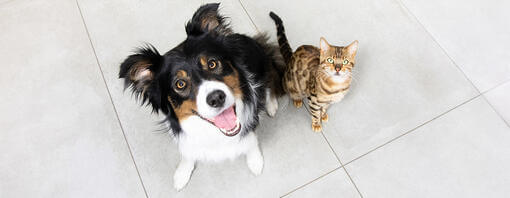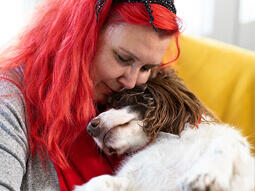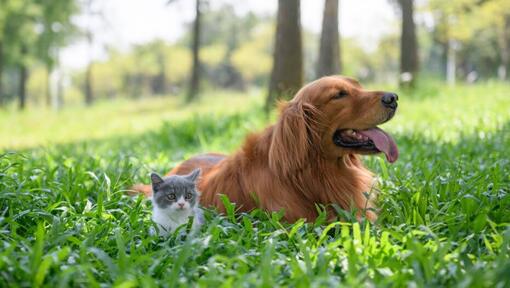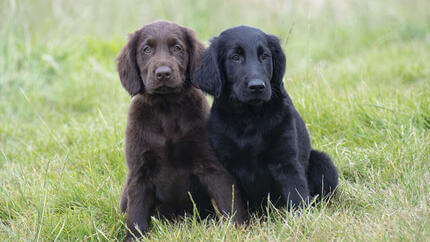
The rivalry between cats and dogs is world-renowned and many believe that the two species can't get along because they're just too different. Keep reading to discover the reasoning behind why they generally dislike each other and find out if it's possible for them to be friends with Purina.
The rivalry between cats and dogs is one that’s known around the world. It’s depicted time after time in cartoons and films and you’ve probably heard of the saying ‘they fight like cats and dogs.’ Many believe that the two species can’t get along and that it’s just a simple case of them being too different from one another, as dogs are exuberant and full of energy, while cats are solitary creatures that prefer peace. But what’s the actual reason behind the clash and most importantly, can they ever get along?
Keep reading to find out about the possibility of cat and dog friends and discover the reasoning behind why their personalities usually clash.
Mixed messages
Where it’s sometimes the case of opposites attract, this doesn’t seem to be the case with cats and dogs. The main thing getting in the way of a harmonious friendship is that cat and dog body language often means different things.
With a dog a high tail and head means that they’re challenging the other individual, while in cats this is often a signal that they want to be friends. A wagging tail also means the opposite thing in the two species, as the swishing back and forth of a tail can indicate a happy and excitable dog, but a very angry cat.
Because their body language is so different, they often misinterpret each other which results in plenty of scratched noses and frightened and confused cats and dogs. However, this doesn’t mean that they’re incompatible by nature, they just need careful introductions in an environment where they can get used to each other’s differences. So, how do help make your cat and dog become friends with each other?
First impressions are vital
The trick to making your cat and dog friends is to start with the right introductions. Cats are quite unforgiving in their nature and are less likely to be open to the situation if it goes badly, so it’s very important that the first encounter goes well. Take your time with the introductions and let them sniff each other before meeting face-to-face by using their bedding or something else that they frequently use. This will allow them to familiarise themselves and get used to each other a little at a time, and will make the first meeting less stressful for both of them.
It’s easier when they’re young
Cats and dogs are much more likely to become lifelong friends if they meet each other from the very start, as they’ll be able to grow up together and learn how the other wants them to behave as they’re still discovering the world around them. When they’re young they’re more likely to be open to a friendship as territorial behaviours and the traditional fear instincts have not yet been given time to manifest.
Introducing older cats and dogs
If you’re introducing older cats and dogs there are a few things you can do to try and make the situation less stressful for them both. Firstly, make sure you give your cat a safe area to escape to like a box or igloo high up where your dog can’t reach.
This will give them the option of a quiet space and the opportunity to navigate without the possibility of being intercepted by the dog. Dogs are known for their exuberant personalities and sometimes this can be a little too much for your cat, so these quiet areas will help to make your cat much more open to becoming friends.
It’s also essential to ensure that your dog gets enough exercise as an excitable dog that’s full of energy is more likely to chase and bother a cat than if they’re tired out from a walk. Make sure you exercise them frequently and be sure to schedule in plenty of play time with your dog, especially during the initiation process.
Are there any specific dog breeds that are good with cats?
It’s often not a good idea to rely on a certain dog breed to be good with cats as it isn’t a guarantee that your pets will get along, as it depends heavily on the personalities and natures of them both. A nervous, timid cat won’t be a good match for an excitable dog, whatever the breed. Sometimes they might just be too different and if that’s the case and they’re finding it difficult to coexist, don’t force it. Allow them both enough space to live their separate lives and ensure that they both have their places they can go to escape each other.
Remember that it takes time and a cat and dog friendship won’t just happen overnight. It’s all about making the right first impressions and giving them plenty of time to adjust.
For more essential information on understanding dog behaviours, take a look at our content hub, packed full of handy guides and advice.













